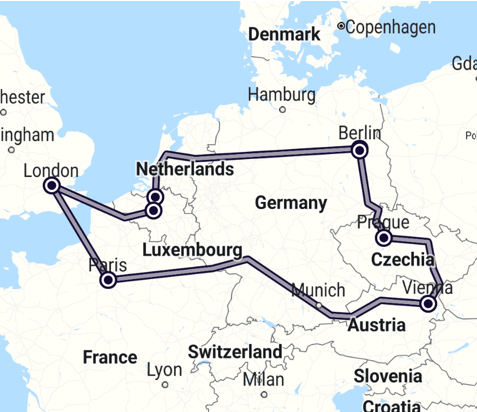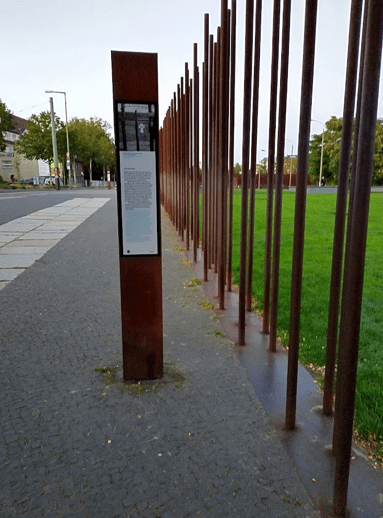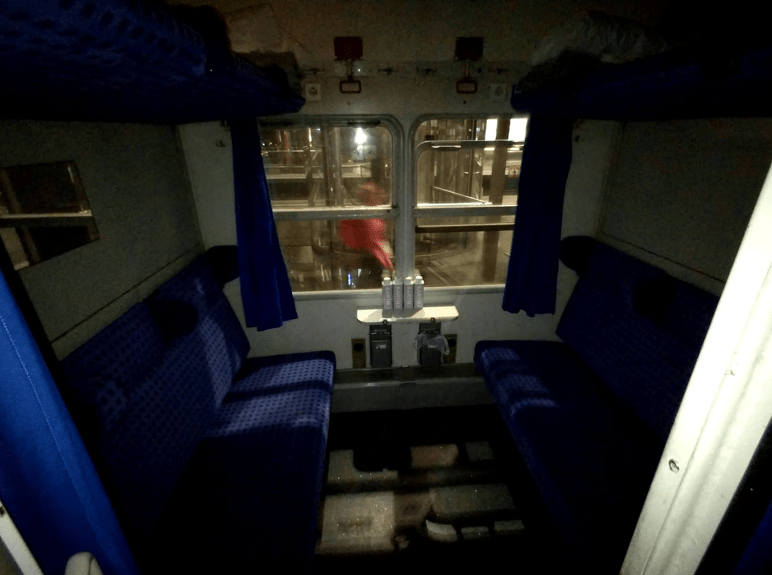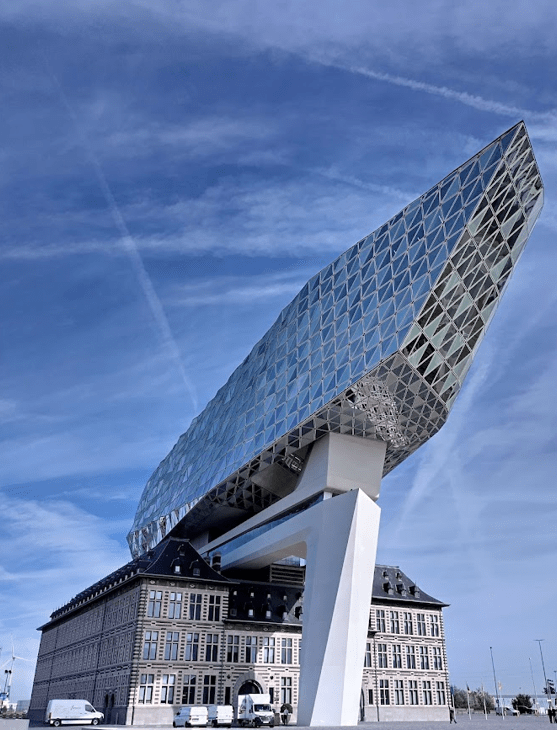Inspired by the “Low Carbon Holidays” Earth Cafe EastCambs CAN organised with Flight Free UK earlier in the year, our group Chair Jethro and his wife Elena decided on an eleven-day Interail trip as their main holiday this year to visit Vienna and Prague.

With guidance from the very useful seat61 website and the information on the Interail website planning the trip was easy. Our route was: London – Paris – Vienna then three nights in Vienna and then Vienna – Prague with five nights in Prague and then Prague – Berlin – Antwerp for one night only then Antwerp – Brussels – London – Ely. All included in our four-day in one month Interail pass.

How does the Interail pass work?
There are many different types of Interail pass which effectively give you a certain number of days travel in a month or three months. They come as either a “Global Pass” which covers travel in 33 different countries in Europe or as “Country Passes” which permit travel in one country only. The correct pass will depend on how many days you intend to travel on. The cheapest global pass entitles you to four days travel in a month (256 Euros for an Adult) whereas the most expensive pass entitles you to 3 months of unlimited travel (947 Euros for an Adult). All passes have standard or first-class options and cover most regional and intercity trains though some high speed and sleeper trains require a seat reservation. You can link your pass to you Rail Planner App on your phone to keep track of your travel plans and also access discounts on things like guided tours via the “More” section of the app. If you are a youth (Under 25) or a Senior (Over 65) you get a hefty discount on your pass and kids under 11 go free with any adult traveling on a global pass so Interailing is a great option for families looking to travel abroad on a budget.
Cost of our Trip
We opted for the four days in one month pass (256 Euros each at time of purchase) which was enough for our trip because if using sleeper trains, you only use one day of travel even if you don’t arrive until the following day. If you want a bit of contingency or the freedom to do a day trip or extra stop along the way, then a five day pass would also have been a good option for our trip. The big selling point for us was that pass also included the Eurostar which can be the most expensive leg of any rail trip to Europe and it also included travel between Ely and London on the day of departure/arrival on the Eurostar. The only additional costs to the pass were the seat reservations for the Eurostar (32 Euros each way) and our couchette reservations on the sleeper trains which was 49 Euros each on the Nightjet sleeper train from Paris to Vienna and 44 Euros each on the European Sleeper Service from Berlin to Antwerp. If you’re on a tight budget, you could opt for a seat instead of a couchette on the sleeper trains or travel via normal intercity trains during the day. Total cost for all our travel including a couple of smaller seat reservation fees was £378, accounting for about £120 saved on two nights accommodation by using sleeper trains our net travel costs was more like £280 – £320 per person for travel. We also made use of the discounts Interail gives you through the RailPlanner app to book activities through GetYourGuide which seemed to give us between 10 – 30% discount on different activities.
Highlights
It was lovely being able to go explore Paris between trains on the first day of the trip but, as with most capital cities, it is quite a chaotic city so our plan to go for a leisurely cycle along the Seine and find a café for lunch didn’t work out. If you plan to do similar then I’d recommend grabbing a sandwich or similar from one of the many excellent bakeries near Gare du Nord and Gare de L’est and then heading to one of the many nice parks which is what we ended up doing eventually ending up at the Eiffel Tower before getting the metro back to Gare de L’est.
The early morning views of Salzburg from the sleeper train were definitely a highlight and after arriving in Vienna we dropped the bags and quickly made use of our city pass to visit the Prater amusement park, one of the oldest in Europe. At the end of the day we headed to the Central Cemetery, this may seem a bit odd to do as tourists but this Cemetry is one of the last strongholds for the once widespread but now critically endangered European Hamster. We were lucky enough to spot one and spent an hour watching it go about its business and squabbling with the Red Squirrels. While there we also saw a Roe Deer and her Fawn sleeping on one of the graves along with Green Woodpeckers and Kestrels.
Other highlights of Vienna included the Kunsthistories Museum which is a very grand building containing a mix of art and Egyptian, Roman and Greek artefacts. We bought a combined ticket with the Hofburg where the Austrian Crown Jewels are kept. When in Vienna it’s also well worth going to either an Opera (as we did at the Wiener Staatsoper) or a concert at the world-famous Mozart concert house. Probably the highlight of Vienna for us, from an architectural and historical perspective was Schönbrunn Palace.


The high-speed train to Prague from Vienna was really easy and ran on time, we opted to book a seat reservation for 4 euros each but it would have been ok without. On arrival we had Lunch at Vytopna Railway Restaurant where your food is delivered by model train. There’s far more to Prague than there is space to include here but we definitely felt our E-Bike tour with Scrooser Tours (booked with discount via the Rail Planner app and GetYourGuide) was a highlight. We would also strongly suggest getting the Prague Visitor Pass which gives you free access or discounts for a huge number of places around the city including the castle and a boat trip on the river and through “Little Venice”.
The pass also gave us free access to the Synagogues of the Jewish Quarter, in the Pinkas Synagogue is a memorial to the Holocaust, hand written on the walls are the names of the thousands of Jews from Prague and elsewhere who were killed during world war two.


On our final day in Prague we had a relaxed morning before heading to catch our train to Berlin at midday. The plan was to arrive in Berlin around 4pm, giving us a few hours to see a bit of the city and grab dinner before our sleeper train at 10:50pm to Antwerp. By not staying the night in Berlin and using the sleeper train instead it saved us the cost of a hotel (which is very expensive in Berlin) and reduced how many travel days we needed allowing us to use the 4 day pass instead of the 5 day pass. However, a bus replacement across the Czech border into Germany and subsequent wait for the next train to Dresden and then Berlin cut short our time in Berlin. The bus did mean we got to see a bit of the Bohemia national park and we still managed to visit the Berlin Wall memorial and the Brandenburg Gate by making use of the city’s excellent tram and metro system.

The sleeper train was about 30 minutes delayed but importantly it did show up! So much for German trains always being on time, that said the high-speed train from Dresden to Berlin was wonderful. The European Sleeper is currently using rolling stock from the 1960’s as the company seeks to re-establish more routes. As such the train is relatively basic but comfortable enough with each of the Couchette compartments accommodating 4 – 6 passengers. We only had one other person in ours and the knock on the door at 7am with breakfast was great for ensuring we were ready to disembark in Antwerp at 8am.
We were in Antwerp for one night only so after dropping our bags off to our hotel near the station, we rented bikes for 5 Euros for the day through t he Velo Antwerp app. There are bike docking stations all over the city, similar to the hire bikes in London, this allows you to easily move around the city without needing to worry about going back to a particular bike after leaving it to explore on foot. The old centre of Antwerp is pretty, particularly the Guid Houses with their golden statues on top. The Maritime museum is also very striking and in the evening we stumbled across a place called Billy’s Beer Café (named after the woner’s French Bulldog) which does great food and has been voted the best bar in Belgium several years running.



On the final day of our trip we set off from Antwerp at 10am to get to Brussels with time for another Belgian waffle before checking in for the Eurostar back to London. Our Interail pass also covered our onward travel back to Ely so it was really easy being able to walk across the road from the Eurostar Termianl to jump on the next train from Kings Cross without needing to buy another ticket. We were home by 4pm and still relatively relaxed unlike the stress of dealing with airports which is another benefit of low carbon travel. All the trains we used were electric, as such depending on how you estimate it this 3206km trip produced 10 – 37kg of CO2 compared with ~493 – 802kg of CO2 produced by flying a similar distance i.e. the train produced 22 – 50 times fewer warming gases than the same trip by plane. The estimates vary depending on the exact plane or train you use. Seat 61 provides estimates for some other journeys here: https://www.seat61.com/CO2flights.htm. Being very conservative train travel is at least ten times less harmful on the climate than flying or driving per passenger.
Summary
Our trip was a great first trial of Interail and we have a few ideas for future holidays using an interrail pass as well as using it to visit family in Italy. I would strongly recommend it as the flexibility the pass gives you is really useful and the discounts on activities through GetYourGuide from the rail planner app were a nice bonus. It shows that opting for the low carbon option can be really good fun!
Will you make a flight free pledge for 2024? https://flightfree.co.uk/
